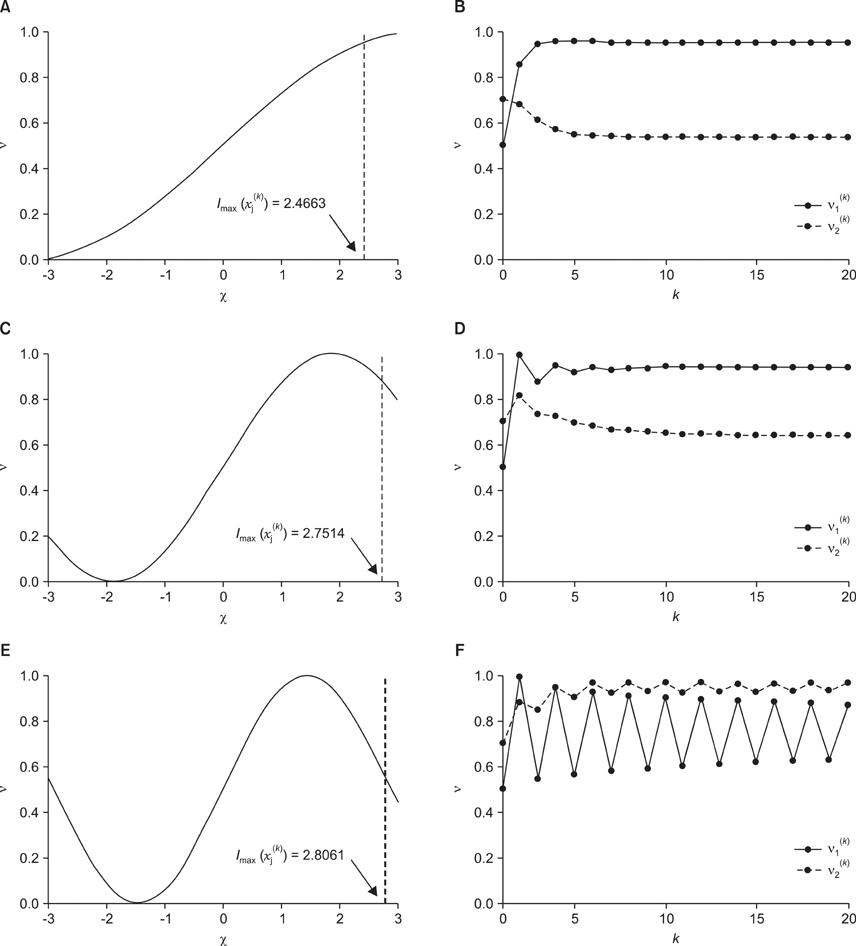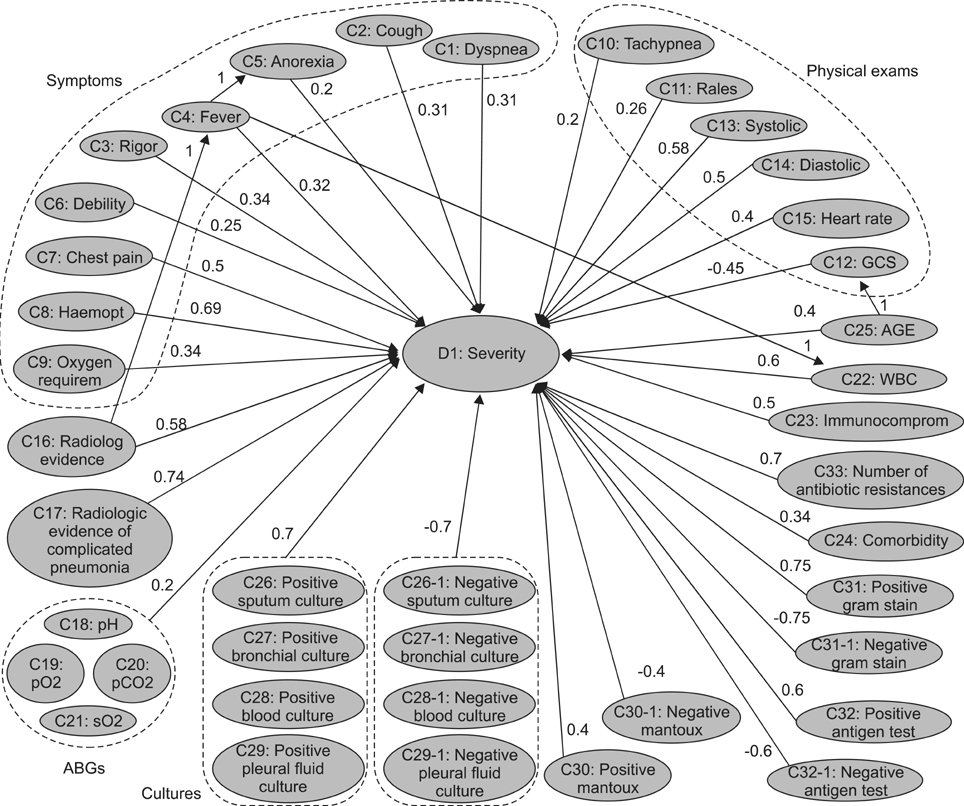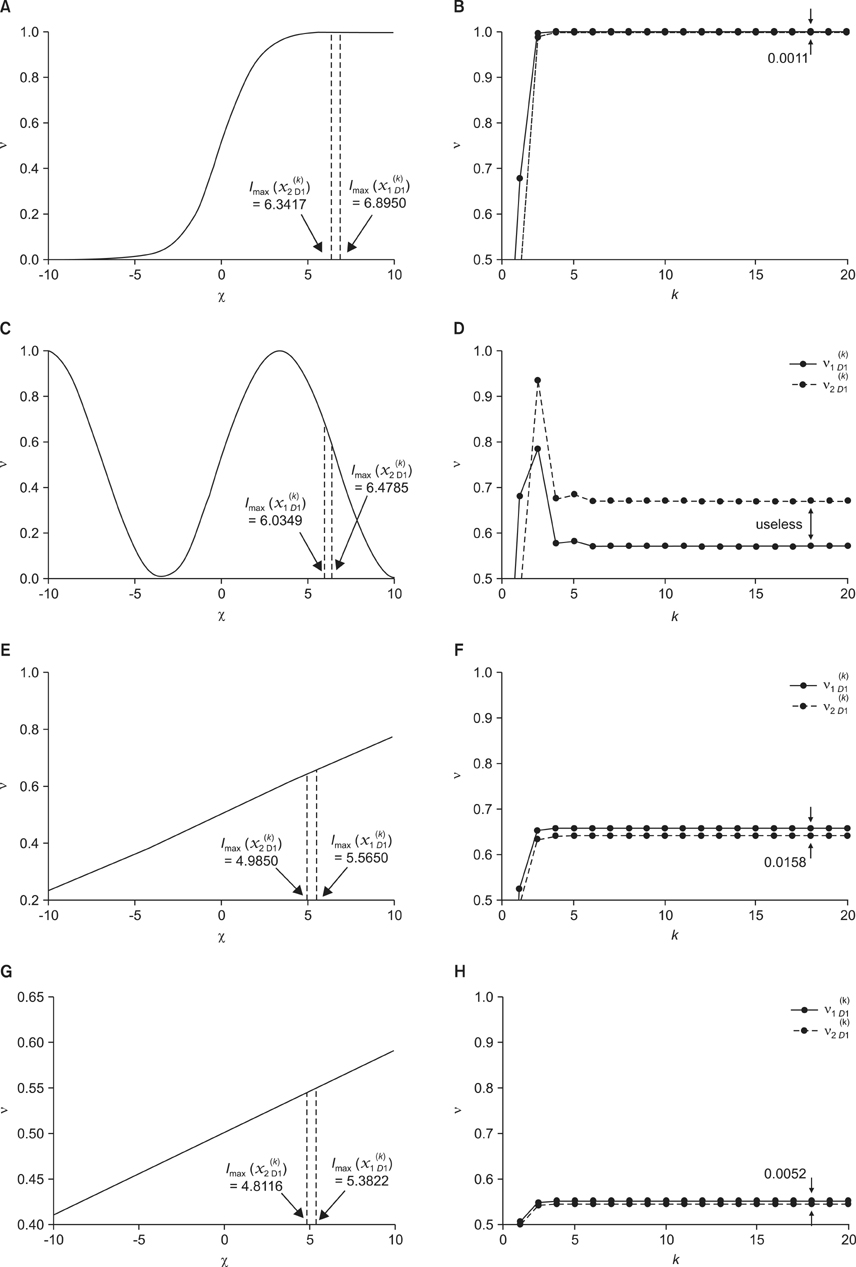Healthc Inform Res.
2012 Jun;18(2):105-114. 10.4258/hir.2012.18.2.105.
Design of Activation Functions for Inference of Fuzzy Cognitive Maps: Application to Clinical Decision Making in Diagnosis of Pulmonary Infection
- Affiliations
-
- 1Department of Medical Informatics, Kyungpook National University School of Medicine, Daegu, Korea. hunecho@knu.ac.kr
- 2Department of Medical Information Technology, Daegu Haany University, Daegu, Korea.
- KMID: 2045574
- DOI: http://doi.org/10.4258/hir.2012.18.2.105
Abstract
OBJECTIVES
Fuzzy cognitive maps (FCMs) representing causal knowledge of relationships between medical concepts have been used as prediction tools for clinical decision making. Activation functions used for inferences of FCMs are very important factors in helping physicians make correct decision. Therefore, in order to increase the visibility of inference results, we propose a method for designing certain types of activation functions by considering the characteristics of FCMs.
METHODS
The activation functions, such as the sinusoidal-type function and linear function, are designed by calculating the domain range of the functions to be reached during the inference process of FCMs. Moreover, the designed activation functions were applied to the decision making process with the inference of an FCM model representing the causal knowledge of pulmonary infections.
RESULTS
Even though sinusoidal-type functions oscillate and linear functions monotonously increase within the entire range of the domain, the designed activation functions make the inference stable because the proposed method notices where the function is used in the inference. And, the designed functions provide more visible numeric results than do other functions.
CONCLUSIONS
Comparing inference results derived using activation functions designed with the proposed method and results derived using activation functions designed with the existing method, we confirmed that the proposed method could be more appropriately used for designing activation functions for the inference process of an FCM for clinical decision making.
MeSH Terms
Figure
Reference
-
1. Clancey WJ, Shortliffe EH. Readings in medical artificial intelligence: the first decade. 1984. Reading, MA: Addison-Wesley.2. Papageorgiou EI, Papandrianos NI, Karagianni G, Kyriazopoulos GC, Sfyras D. A fuzzy cognitive map based tool for prediction of infectious diseases. Proceedings of the IEEE International Conference on Fuzzy Systems. 2009. 2094–2099.
Article3. Assadi SM, Yucel M, Pantelis C. Dopamine modulates neural networks involved in effort-based decision-making. Neurosci Biobehav Rev. 2009. 33:383–393.
Article4. Mangalampalli A, Mangalampalli SM, Chakravarthy R, Jain AK. A neural network based clinical decision-support system for efficient diagnosis and fuzzy-based prescription of gynecological diseases using homoeopathic medicinal system. Expert Syst Appl. 2006. 30:109–116.
Article5. Cruz-Ramirez N, Acosta-Mesa HG, Carrillo-Calvet H, Nava-Fernandez LA, Barrientos-Martínez RE. Diagnosis of breast cancer using Bayesian networks: a case study. Comput Biol Med. 2007. 37:1553–1564.
Article6. Farion K, Michalowski W, Wilk S, O'Sullivan D, Rubin S, Weiss D. Clinical decision support system for point of care use: ontology-driven design and software implementation. Methods Inf Med. 2009. 48:381–390.
Article7. Kawazoe Y, Ohe K. An ontology-based mediator of clinical information for decision support systems: a prototype of a clinical alert system for prescription. Methods Inf Med. 2008. 47:549–559.
Article8. Froelich W, Wakulicz-Deja A. Associational cognitive maps for medical diagnosis support. Proceedings of the International Intelligent Information Systems Conference. 2008. 387–396.9. Stylios CD, Groumpos PP. Fuzzy cognitive maps in modeling supervisory control systems. J Intell Fuzzy Syst. 2000. 8:83–98.10. Aguilar J. A survey about fuzzy cognitive maps papers (invited paper). Int J Comput Cogn. 2005. 3:27–33.11. Kosko B. Fuzzy cognitive maps. Int J Man Mach Stud. 1986. 24:65–75.
Article12. Lee IK, Kwon SH. Design of sigmoid activation functions for fuzzy cognitive maps via Lyapunov stability analysis. IEICE Trans Inf Syst. 2010. 93:2883–2886.
Article13. Bueno S, Salmeron JL. Benchmarking main activation functions in fuzzy cognitive maps. Expert Syst Appl. 2009. 36:5221–5229.
Article14. Tsadiras AK. Comparing the inference capabilities of binary, trivalent and sigmoid fuzzy cognitive maps. Inf Sci. 2008. 178:3880–3894.
Article15. Stylios CD, Groumpos PP. Mathematical formulation of fuzzy cognitive maps. Proceedings of the 7th Mediterranean Conference on Control and Automation. 1999. 2251–2261.16. Dickerson JA, Kosko B. Virtual worlds as fuzzy cognitive maps. Proceedings of the IEEE Virtual Reality Annul International Symposium. 1993. 471–477.
Article
- Full Text Links
- Actions
-
Cited
- CITED
-
- Close
- Share
- Similar articles
-
- A computer-aided diagnostic system for kidney disease
- Probability or Reasoning: Current Thinking and Realistic Strategies for Improved Medical Decisions
- Application of Artificial Intelligence for the Management of Oral Diseases
- Public Health Nurses' Decision Making Models and Their Knowledge Structure
- Identifying a Personalized Anesthetic with Fuzzy PROMETHEE





